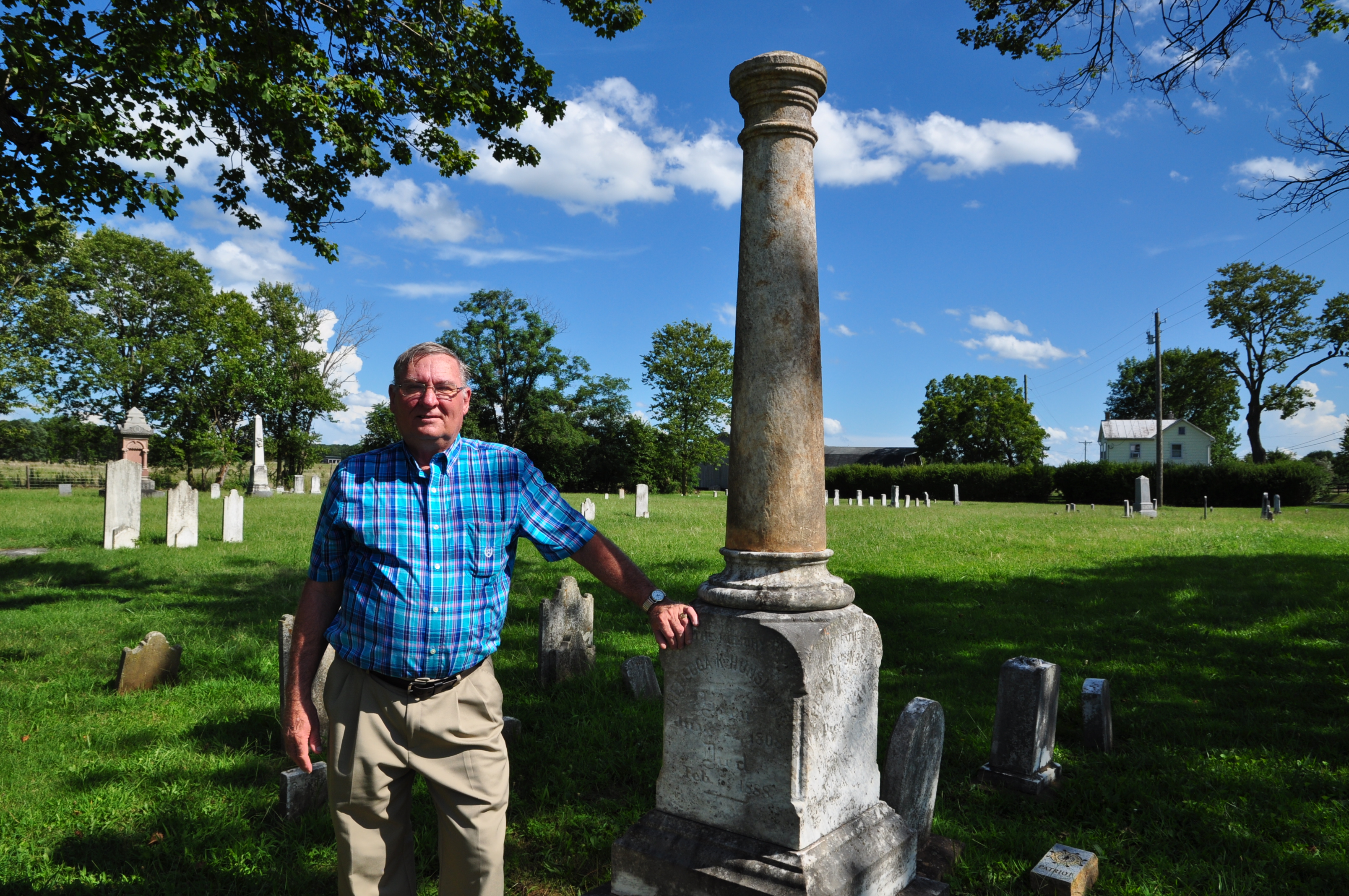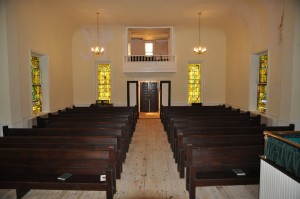Berryville Old Book Shop, Complete with Cat
Archie and Boomer and the Magic Shop
By Claire Stuart

There is a certain aura of magic around particular types of old bookshops. It’s no wonder that so many stories feature bookshops inhabited by witches, wizards, ghosts, and time travelers. The Berryville Old Book shop has that atmosphere — and the requisite bookstore cat as well.
I made my way along a narrow aisle flanked by some stacks of books that had not yet been shelved. I took a wrong step, blundered into them and sent books cascading all over the floor. To my astonishment, a small book of Calvin & Hobbes cartoons slid out of the pile. I had been looking for it for years.
A gray-bearded gent in a beret, holding a cat in his lap (and looking a bit like a wizard), nodded his head sagely and uttered one word: “Serendipity!”
Archie Justice, retired from both the U.S. Army and the government, has been in the used book business for 16 years. Boomer, the cat, arrived as a stray kitten 11 years ago. She lives in the shop and often lounges in the front window, observing the passersby who stop to observe her.
“My wife filled in during the week when I was still working,” he explains, “and she’s more interested in children’s books.”
Justice says that he always loved books. He collected books on World War II and military history and was constantly on the lookout for books on the subject at yard sales, auctions and estate sales. Anyone who has looked for special books at sales knows that books are usually sold in boxed lots. You can’t pick out the ones you want, and you end up with a lot of books that you didn’t want. So, it is a natural transition to open a bookstore!
If you are looking for popular fiction, you will probably not find much here. With the exception of the children’s books and a big selection of paperback mysteries, they concentrate on non-fiction. What you will find is a wealth of factual information on just about any subject you can imagine. They do not stock romances, business or computer books.
It’s easy to lose track of time browsing through histories, ancient and modern, of wars, arms, battles, leaders and tyrants. Pick a country or a region, whether it is China, Britain, Australia, Europe, Mexico, Africa, the Middle East. Read about soldiers, spies, explorers, the U.S. frontier, Black history and Native Americans. Check out the extensive section on Virginia and West Virginia history, including Civil War, individual county histories and even family and church histories.
The gardener can visit classical English gardens, learn to make a rock garden, learn all about roses, tulips, or rhododendrons. Cook (and eat) around the world with cookbooks from just about everywhere. Nature lovers will learn about bats, mice, fish, identify trees or caterpillars. There is a whole section just for birds. There are sections for cats and dogs (“I keep them separated!” Justice notes). Browse art, architecture, chess, music, boats and trains.
The whole back room is dedicated to children’s books and a section of paperback mysteries. Children’s books run the gamut from vintage and classic to recent, with fairy tales, science, biography, rhymes, picture books, early readers, Dr. Seuss and Nancy Drew.
“If there are 100 copies of a book on Abe, some books sell for a penny plus the shipping charge! The seller makes a few cents profit on the shipping. It’s not worth the bother. But if I have something like the history of some little county in Ohio, it probably won’t sell in the shop, but it could sell online.”
Justice reports that they give a lot of books away, donating to the Blue Ridge Hospice thrift store and library book sales. They recently donated 100 books to the elementary school.
“If there are any illiterate children in Berryville,” Justice laughed, “don’t blame us!”




 Story and photos by Betsy Arnett
Story and photos by Betsy Arnett Long before the Stones conveyed the property to the Lutheran and Calvinist churches, it had been a place of worship. By 1785, a log structure stood on the site, known as “Steinkirche” by the area’s German-speaking Lutherans. The earliest recorded reference to Presbyterian use of the Chapel was the appointment of Reverend J.C. Leach by the Winchester Presbytery in 1824 to preach at “Stone’s
Long before the Stones conveyed the property to the Lutheran and Calvinist churches, it had been a place of worship. By 1785, a log structure stood on the site, known as “Steinkirche” by the area’s German-speaking Lutherans. The earliest recorded reference to Presbyterian use of the Chapel was the appointment of Reverend J.C. Leach by the Winchester Presbytery in 1824 to preach at “Stone’s
 As the Crow Flies
As the Crow Flies
 Aging in Place
Aging in Place


 By Doug Pifer
By Doug Pifer
 By Wendy Gooditis
By Wendy Gooditis
 After 32 years of service, Dwight and Catherine Brown bid Clarke County farewell
After 32 years of service, Dwight and Catherine Brown bid Clarke County farewell